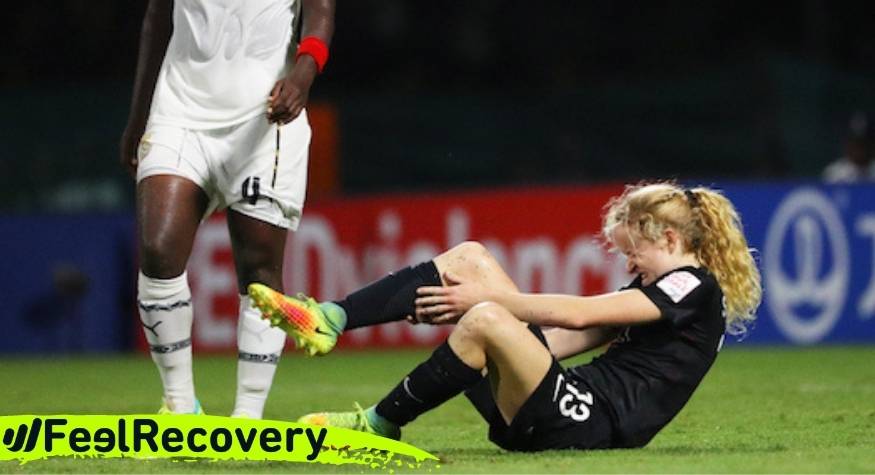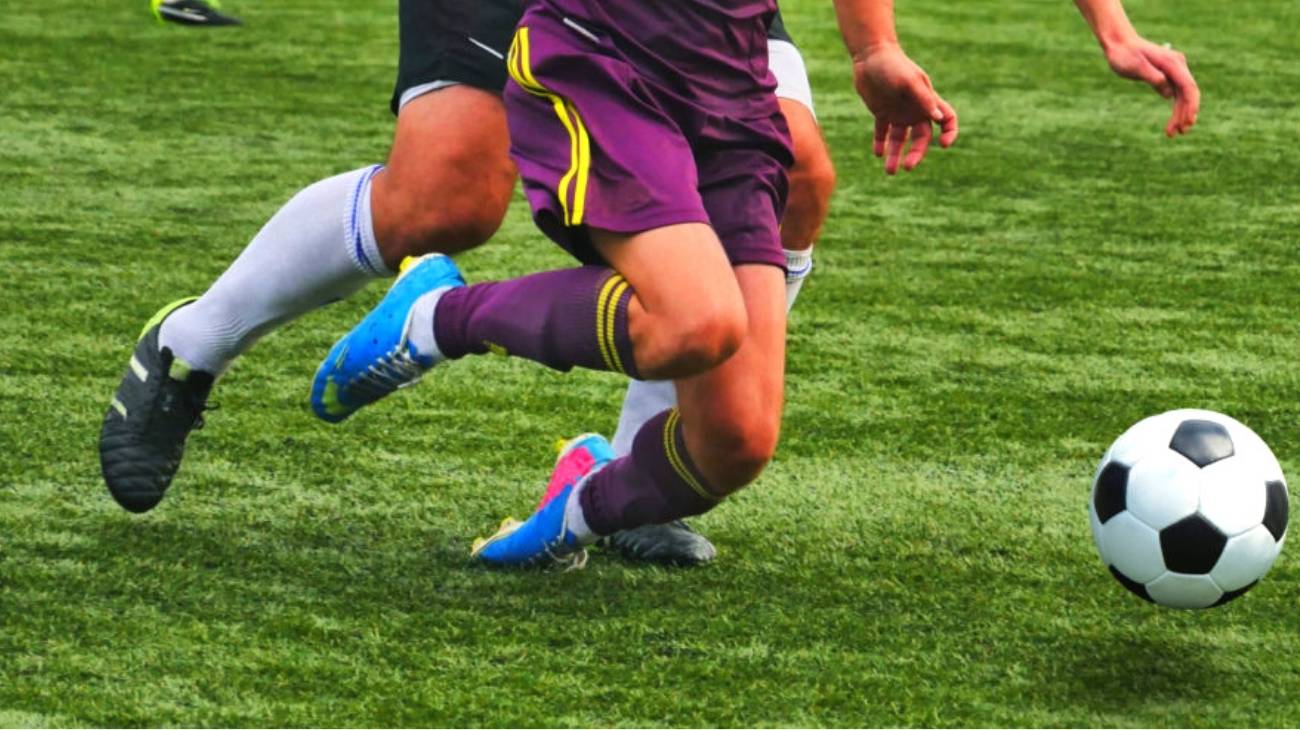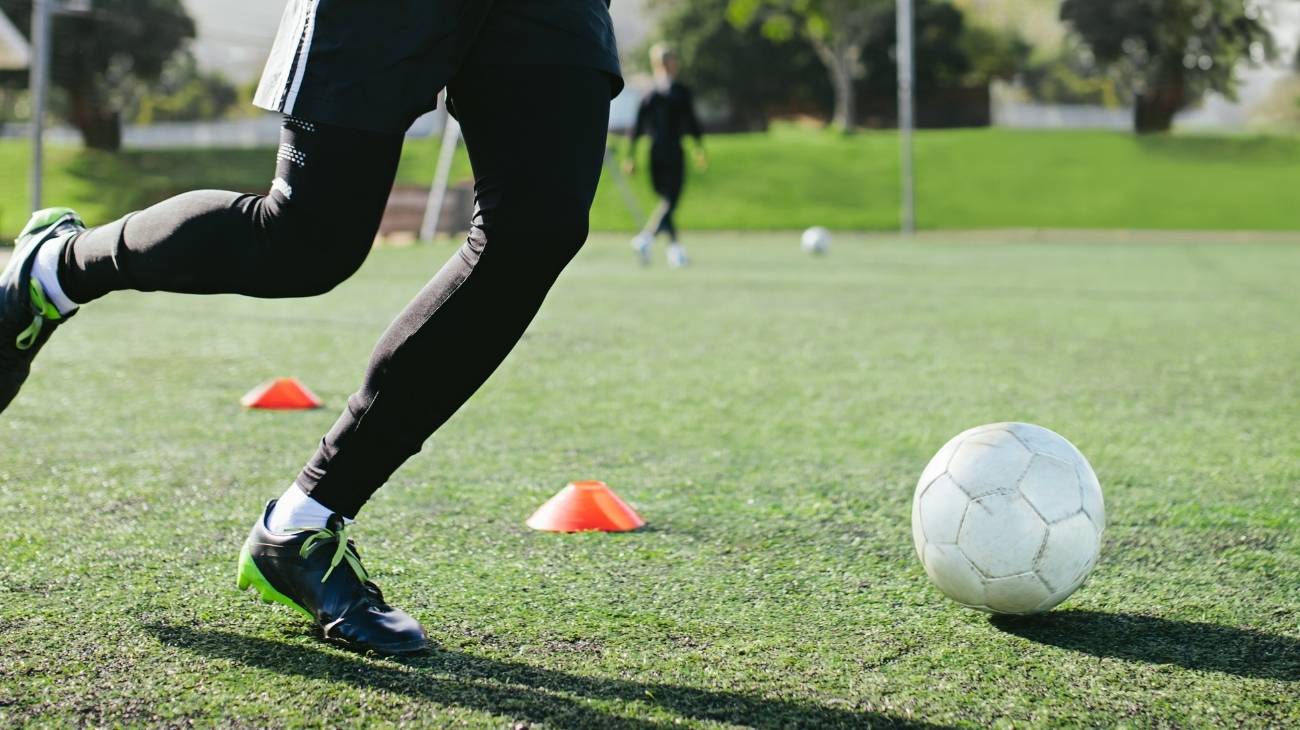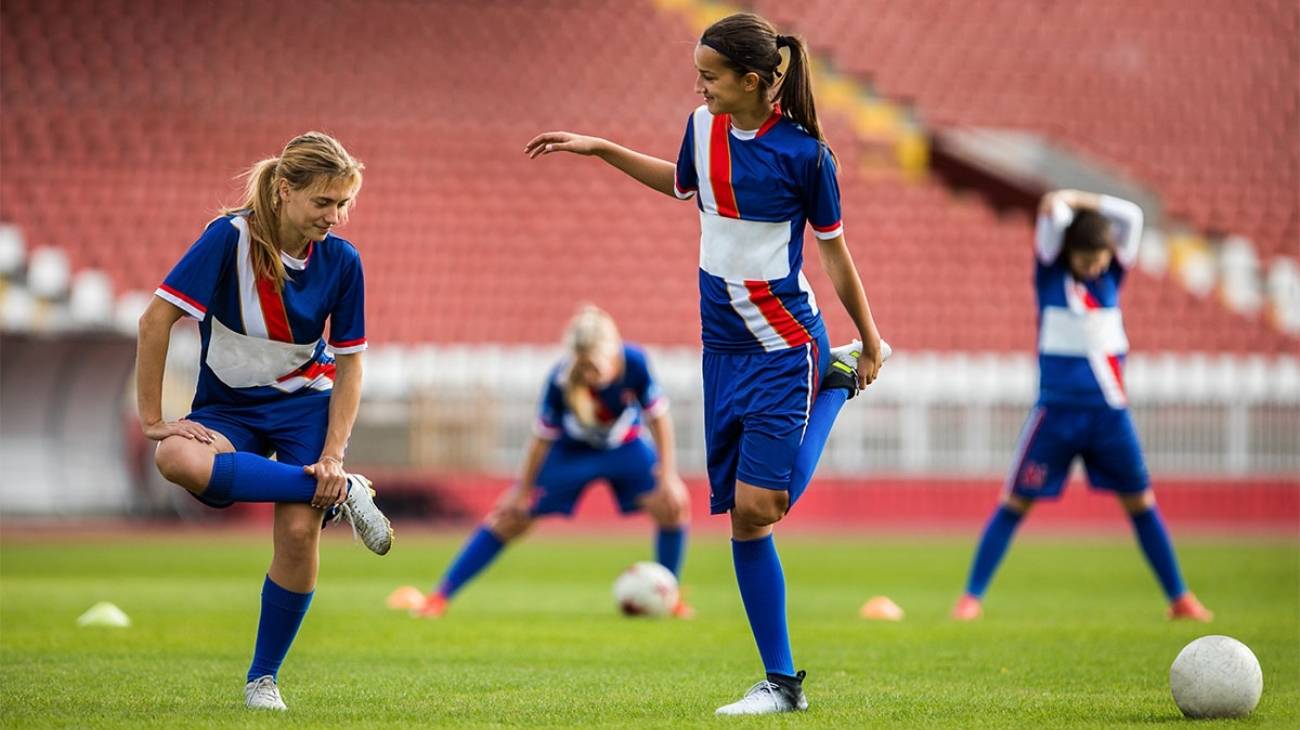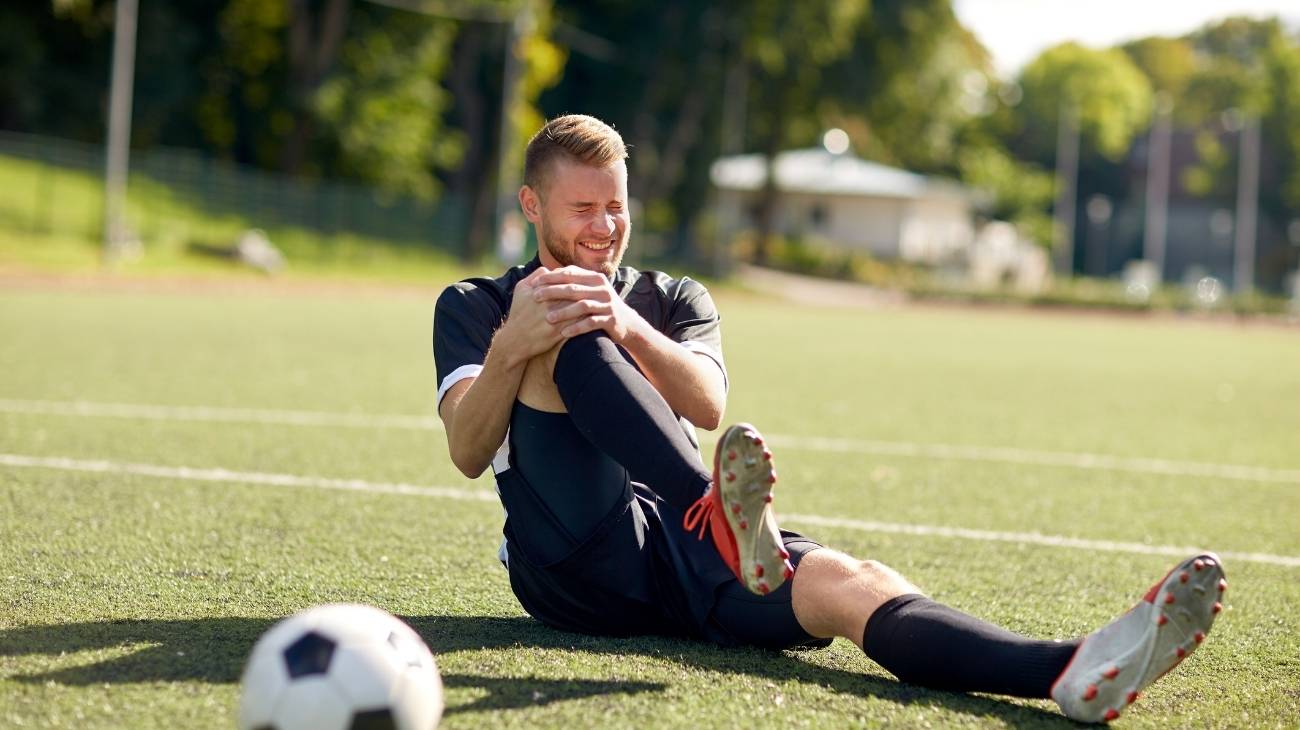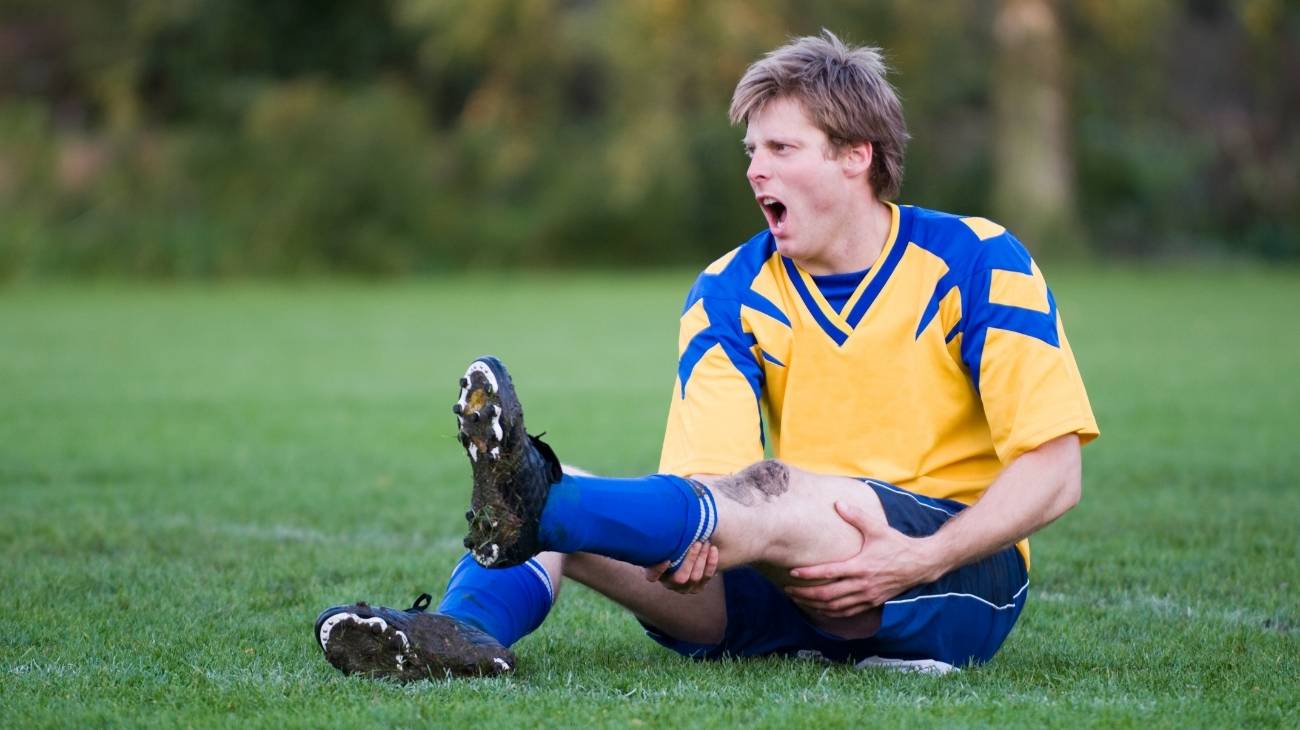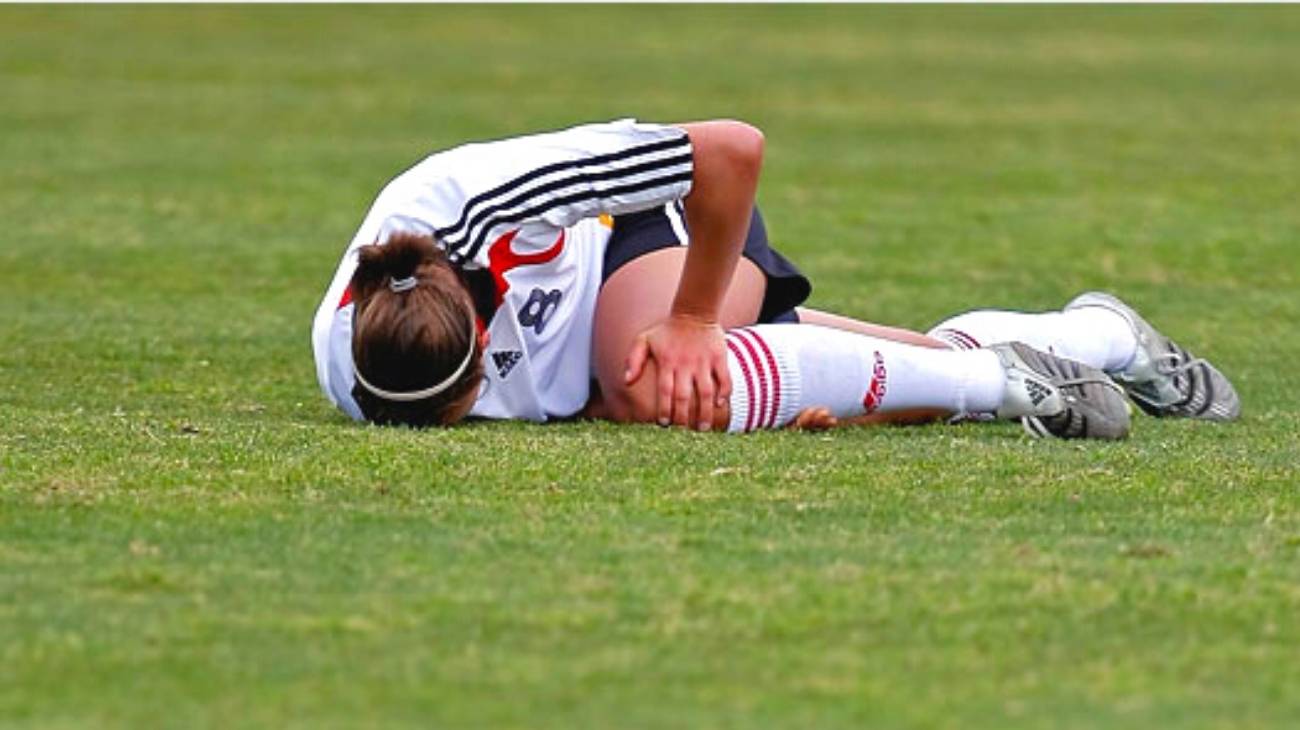Football is the world's most popular sport with the largest number of fans worldwide. However, it is also one of the sports where most injuries occur, whether they are caused by the player himself, by facilities in poor condition, or simply by fortuitous actions during a match.
The knee is one of the joints that causes the most problems for football players, as they tend to accumulate a lot of stress due to both the intense running that is done during the game, as well as tackles by opponents to steal the ball.
What are the most common types of knee injuries when playing football?
The knee is a joint made up of the femoral condyles, patella and tibial plateau. It is one of the most complex joints in the entire musculoskeletal system and is responsible for the flexion and extension movements of the leg over the thigh.
Due to impacts, wear and tear or simply inadequate movements, this joint is usually one of the most frequently injured, the most common being the ones we will mention below.
Ruptured anterior cruciate ligament
The knee has four ligaments; the inner lateral, outer lateral or posterior and a pair of cruciate ligaments, with the anterior ligament being the most commonly injured and the one that causes the most problems for football players. When an opponent's tackle or a fall of the body's weight on the joint causes it to twist unnaturally inwards, this tissue is partially or completely torn.
This injury generates a snap that the player will feel instantly, followed by severe pain that will inflame the entire joint in a matter of seconds. If the tear is partial, it can be treated with painkillers and physiotherapy while the tissue regenerates naturally, but if it is total, surgery is required. In either case, recovery time ranges from 3 to 6 months.
Knee sprain
This is usually caused by a movement outside the range of the joint, which will result in excessive stretching or strain of the ligaments, even causing them to tear. This type of injury is quite common in football as there are a lot of lateral and pivoting movements in which you endure blows from opponents that can end up causing damage to the knee.
There are three degrees of patellar sprains:
- Grade I: Stretching with micro-tearing of the ligament. Only pain and tenderness is present.
- Grade II: Partial tear of the ligament with slight instability or difficulty walking. There is swelling, pain, redness and warmth in the area.
- Grade III: There is total ligament tear, swelling, oedema, pain and total inability to walk or stand.
Patellar dislocation
The patella is a triangular bone that covers the knee. Due to improper movement, this bone can be displaced from its normal position (usually deflected to the outside of the leg) by a strong blow during a game or training, causing a serious injury. This can cause deformation of the anatomy of the leg, decreased and limited movement, pain, tenderness and swelling in the area.
Meniscal tears
In football, it is very common for the meniscus to wear down progressively due to overloading and stress, which can lead to meniscus tears due to inadequate compression or torsion of the joint. This will result in pain on the inside or outside of the knee when standing or walking, inability to flex the knee, oedema, joint locking and a crunching sound when flexing and extending the joint.
Usually this type of injury must be treated surgically by arthroscopy. Recently, however, the application of hyaluronic acid or platelet-rich plasma has been implemented to improve the functionality and regeneration of the knee cells.
Knee osteoarthritis
Osteoarthritis is a degenerative injury caused by extreme wear and tear of the cartilage lining the knee. It causes a lot of pain when trying to bend the leg, and severely limits the player's ability to jump and run. It is not the result of a one-off event but of years of playing football, which causes wear and tear on the joint until it becomes practically useless.
If it is detected in time, it can be treated with an arthroscopy, but when the joint is too worn out, the solution is a total replacement of the knee with a metal prosthesis that will leave the athlete limited for the rest of his life, unable to play football or any other high-impact activity.
Best products for the recovery of leg and knee injuries in football players
Bestseller
-
2 Knee Compression Sleeve (Black/Gray)
£17,50 -
2 Knee Compression Sleeve (Green/Navy)
£17,50 -
2 Knee Compression Sleeve (Pink/Bordeaux)
£17,50 -
2 Patella Knee Strap (Black/Gray)
£12,95 -
2 Patella Knee Strap (Green/Navy)
£12,95 -
2 Patella Knee Strap (Pink/Bordeaux)
£12,95 -
Microwave Wheat Bag for Back Pain Relief (Extra Large) (Hearts)
£25,50 -
Microwave Wheat Bag for Back Pain Relief (Extra Large) (Oxford)
£25,50 -
Microwave Wheat Bag for Back Pain Relief (Extra Large) (Sport)
£25,50 -
Microwaveable Wheat Bag for Pain Relief (Hearts)
£17,50 -
Microwaveable Wheat Bag for Pain Relief (Oxford)
£17,50 -
Microwaveable Wheat Bag for Pain Relief (Sport)
£17,50 -
Wheat Bag for Microwave Classic Bottle Shaped (Hearts)
£17,50 -
Wheat Bag for Microwave Classic Bottle Shaped (Oxford)
£17,50 -
Wheat Bag for Microwave Classic Bottle Shaped (Sport)
£17,50
How to apply the RICE therapy to treat knee injuries in football players?
The PRICE therapy is an update of the classic RICE therapy that provides a series of steps to provide first aid for injuries of all kinds in any sport, and is widely used in professional and amateur football.
Here we explain step by step how to do it:
- Protection: the first thing to do is to protect the injured knee, either with a bandage or a support tool such as a splint, so that it does not receive a new blow that could cause major problems.
- Rest: using the injured knee will be key to prevent the injury from worsening. The best way to do this is to remain seated or lying on your back, and if necessary use crutches to keep the knee off the ground as little as possible.
- Ice: ice provides a vasoconstriction that will reduce the inflammation and pain caused by a traumatic injury, especially in the case of sprains. It should be applied for several minutes just on the side of the knee where we notice the greatest inflammation.
- Compression: compressing the injured knee will help stop the swelling from spreading, but be careful not to squeeze too tightly as this could damage important blood vessels. It is best to use a special bandage or a compression knee brace.
- Elevation: once the previous steps have been taken, lie on your back and elevate your leg on a pad or bench to raise it above the level of your heart and reduce the blood flow to gradually reduce the swelling.
References
- Roth, T. S., & Osbahr, D. C. (2018). Knee Injuries in Elite Level Soccer Players. American journal of orthopedics (Belle Mead, NJ), 47(10). https://europepmc.org/article/med/30481234
- Grimm, N. L., Jacobs Jr, J. C., Kim, J., Denney, B. S., & Shea, K. G. (2015). Anterior cruciate ligament and knee injury prevention programs for soccer players: a systematic review and meta-analysis. The American journal of sports medicine, 43(8), 2049-2056. https://journals.sagepub.com/doi/abs/10.1177/0363546514556737
- Waldén, M., Krosshaug, T., Bjørneboe, J., Andersen, T. E., Faul, O., & Hägglund, M. (2015). Three distinct mechanisms predominate in non-contact anterior cruciate ligament injuries in male professional football players: a systematic video analysis of 39 cases. British journal of sports medicine, 49(22), 1452-1460. https://bjsm.bmj.com/content/49/22/1452.short
- Waldén, M., Hägglund, M., & Ekstrand, J. (2005). UEFA Champions League study: a prospective study of injuries in professional football during the 2001–2002 season. British journal of sports medicine, 39(8), 542-546. https://bjsm.bmj.com/content/39/8/542.short
- Yoon, Y. S., Chai, M., & Shin, D. W. (2004). Football injuries at Asian tournaments. The American journal of sports medicine, 32(1_suppl), 36-42. https://journals.sagepub.com/doi/abs/10.1177/0095399703258781
- Arnason, A., Sigurdsson, S. B., Gudmundsson, A., Holme, I., Engebretsen, L., & Bahr, R. (2004). Risk factors for injuries in football. The American journal of sports medicine, 32(1_suppl), 5-16. https://journals.sagepub.com/doi/abs/10.1177/0363546503258912
- Östenberg, A., & Roos, H. (2000). Injury risk factors in female European football. A prospective study of 123 players during one season. Scandinavian journal of medicine & science in sports, 10(5), 279-285. https://onlinelibrary.wiley.com/doi/abs/10.1034/j.1600-0838.2000.010005279.x
- Ekstrand, J., Hägglund, M., & Waldén, M. (2011). Epidemiology of muscle injuries in professional football (soccer). The American journal of sports medicine, 39(6), 1226-1232. https://journals.sagepub.com/doi/abs/10.1177/0363546510395879
- Hallén, A., & Ekstrand, J. (2014). Return to play following muscle injuries in professional footballers. Journal of sports sciences, 32(13), 1229-1236. https://www.tandfonline.com/doi/abs/10.1080/02640414.2014.905695
- Hespel, P., Maughan, R. J., & Greenhaff, P. L. (2006). Dietary supplements for football. Journal of Sports Sciences, 24(07), 749-761. https://www.tandfonline.com/doi/abs/10.1080/02640410500482974

